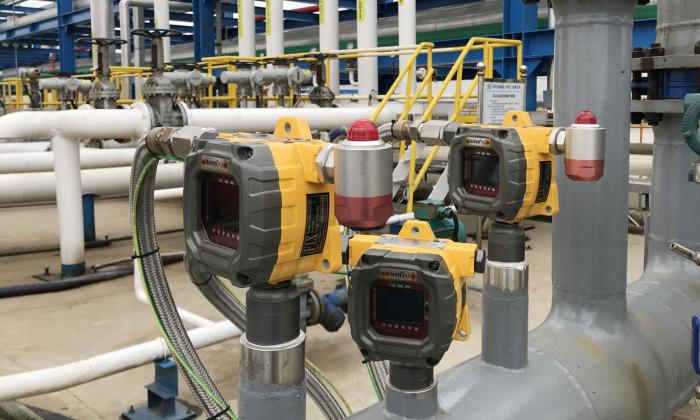How to choose a suitable toxic and harmful gas detector?

For all kinds of different production occasions and testing requirements, choosing the right gas detector is every person engaged in safety and health work must pay great attention to. Here we will introduce some specific situations for your reference.
1) Confirm the gas type and concentration range to be detected:
The types of gases encountered in each production department are different. When choosing a gas detector, all possible situations must be considered. If methane and other less toxic alkanes are the majority, the LEL detector is undoubtedly the most suitable. This is not only because the LEL detector has a simple principle and a wide range of applications, but also has the characteristics of convenient maintenance and calibration. If there are toxic gases such as carbon monoxide and hydrogen sulfide, a specific gas detector must be selected first to ensure the safety of workers. If there are more organic toxic and harmful gases, considering the low concentration that may cause personnel poisoning, such as aromatic hydrocarbons, halogenated hydrocarbons, ammonia (amine), ethers, alcohols, fats, etc., the light introduced in the previous chapter should be selected. Ionization detector, never use LEL detector to deal with it, because this may cause casualties.
If the gas types cover the above several types of gases, choosing a composite gas detector may achieve a multiplier effect with less effort.
2) Determine the use occasion:
Different industrial environments require different types of gas detectors.
A) Fixed gas detector:
This is a detector that is used more in industrial equipment and in the production process. It can be installed at a specific detection point to detect specific gas leaks. The fixed detector is generally a two-body type. The detection head composed of sensor and transmitter is installed in the detection site as a whole, and the secondary instrument composed of circuit, power supply and display alarm device is installed in a safe place for easy monitoring. Its detection principle is the same as that described in the previous section, but it is more suitable for the continuous, long-term stability and other characteristics required by fixed detection in terms of process and technology. They should also be selected according to the type and concentration of the gas on site, and at the same time, they should be installed in the most likely leaking part of the specific gas. For example, the most effective height of the sensor should be selected according to the specific gravity of the gas.
B) Portable gas detector:
Because the portable instrument is easy to operate and small in size, it can be carried to different production sites. The electrochemical detector is powered by alkaline batteries and can be used continuously for 1000 hours; the new LEL detector, PID and composite instrument use rechargeable batteries (some have been Using non-memory nickel-metal hydride or lithium-ion batteries), they generally can work continuously for nearly 12 hours. Therefore, this type of instrument is more and more widely used in various factories and health departments.
If you use this type of instrument as a safety alarm in an open place, such as an open workshop, you can use a portable diffusion gas detector, because it can continuously, real-time and accurately display the concentration of toxic and harmful gases on site. Some of these new instruments are also equipped with vibration alarm attachments-to avoid not hearing the sound alarm in a noisy environment, and install a computer chip to record the peak value, STEL (15-minute short-term exposure level) and TWA (8-hour statistical weighting) Average)-Provide specific guidance for workers' health and safety.
If you enter a confined space, such as reaction tanks, storage tanks or containers, sewers or other underground pipelines, underground facilities, agricultural closed granaries, railway tank cars, shipping cargo holds, tunnels, etc., inspections must be carried out before personnel enters , And to be tested outside the confined space. In this case, you must choose a multi-gas detector with a built-in sampling pump. Because the gas distribution and gas types in different parts (upper, middle, and lower) in the confined space are very different. For example: In general, the specific gravity of combustible gas is relatively light, and most of them are distributed in the upper part of the confined space; the specific gravity of carbon monoxide is similar to that of air, which is generally distributed in the middle of the confined space; while heavier gases like hydrogen sulfide exist in the confined The lower part of the space (as shown in the picture). At the same time, oxygen concentration is also one of the types that must be detected. In addition, if the volatilization and leakage of organic substances in the tank is considered, a detector that can detect organic gases is also needed. Therefore, a complete confined space gas detector should have a built-in pumping function-so that it can be non-contact, separate detection; with multi-gas detection function-to detect different spatial distribution of hazardous gases, including inorganic gases and organic gases ; With oxygen detection function-prevent hypoxia or oxygen enrichment; compact, portable instrument that does not affect workers' work. Only in this way can the absolute safety of staff entering the confined space be guaranteed.
In addition, after entering the confined space, the gas components must be continuously tested to avoid changes in the concentration of volatile organic compounds or other toxic and harmful gases due to personnel entry, sudden leakage, and temperature changes.
If used for emergency accidents, leak detection and inspections, pump-suction instruments with short response time, high sensitivity and resolution should be used, so that the location of the leak can be easily judged.
In the case of industrial hygiene inspections and health surveys, it is very convenient to use instruments with data recording and statistical calculations, as well as the ability to connect to computers.
At present, with the development of manufacturing technology, portable multi-gas (combined) detector is also a new choice for us. Since this detector can be equipped with multiple gas (inorganic/organic) detection sensors required on a host, it has the characteristics of small size, light weight, fast response, and simultaneous multi-gas concentration display. More importantly, the pump-suction compound gas detector is cheaper than multiple single diffusion gas detectors, and it is more convenient to use. It should be noted that when choosing this type of detector, it is best to choose an instrument with the function of individually switching each sensor to prevent damage to one sensor from affecting the use of other sensors. At the same time, in order to avoid blockage of the suction pump due to water intake, it is also safer to choose an instrument with a smart pump design with a pump stop alarm.
